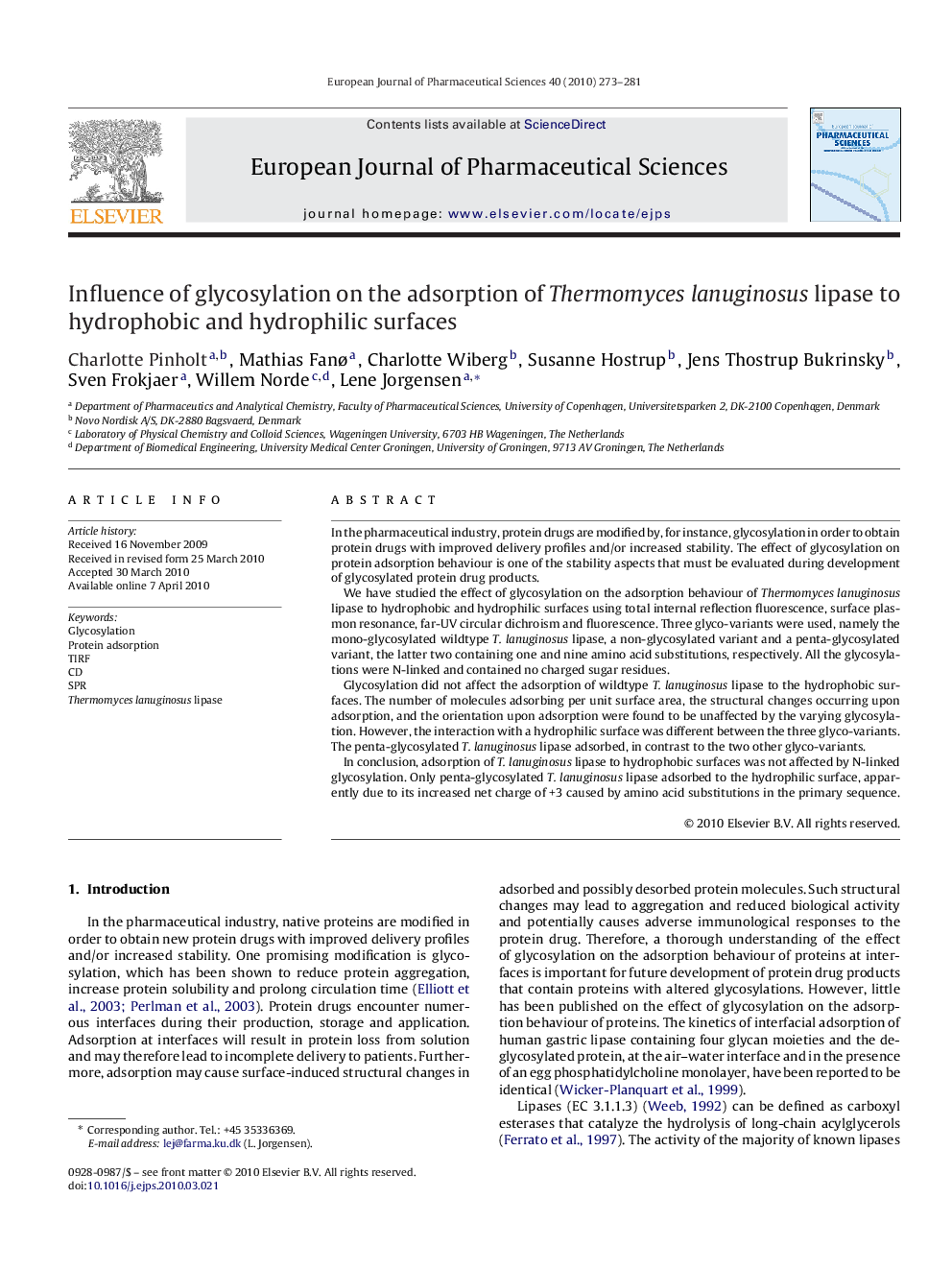| Article ID | Journal | Published Year | Pages | File Type |
|---|---|---|---|---|
| 2481592 | European Journal of Pharmaceutical Sciences | 2010 | 9 Pages |
In the pharmaceutical industry, protein drugs are modified by, for instance, glycosylation in order to obtain protein drugs with improved delivery profiles and/or increased stability. The effect of glycosylation on protein adsorption behaviour is one of the stability aspects that must be evaluated during development of glycosylated protein drug products.We have studied the effect of glycosylation on the adsorption behaviour of Thermomyces lanuginosus lipase to hydrophobic and hydrophilic surfaces using total internal reflection fluorescence, surface plasmon resonance, far-UV circular dichroism and fluorescence. Three glyco-variants were used, namely the mono-glycosylated wildtype T. lanuginosus lipase, a non-glycosylated variant and a penta-glycosylated variant, the latter two containing one and nine amino acid substitutions, respectively. All the glycosylations were N-linked and contained no charged sugar residues.Glycosylation did not affect the adsorption of wildtype T. lanuginosus lipase to the hydrophobic surfaces. The number of molecules adsorbing per unit surface area, the structural changes occurring upon adsorption, and the orientation upon adsorption were found to be unaffected by the varying glycosylation. However, the interaction with a hydrophilic surface was different between the three glyco-variants. The penta-glycosylated T. lanuginosus lipase adsorbed, in contrast to the two other glyco-variants.In conclusion, adsorption of T. lanuginosus lipase to hydrophobic surfaces was not affected by N-linked glycosylation. Only penta-glycosylated T. lanuginosus lipase adsorbed to the hydrophilic surface, apparently due to its increased net charge of +3 caused by amino acid substitutions in the primary sequence.
